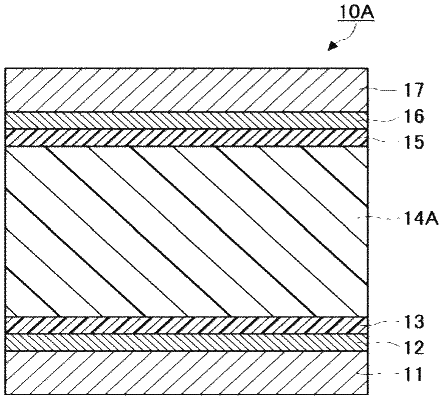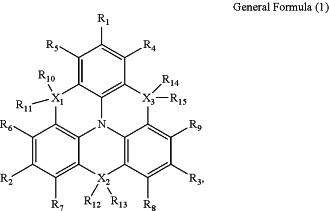| CPC C09K 9/02 (2013.01) [G02F 1/155 (2013.01); G02F 1/15165 (2019.01); C09K 2211/1007 (2013.01); C09K 2211/1011 (2013.01); C09K 2211/1014 (2013.01); C09K 2211/1022 (2013.01); G02F 2201/12 (2013.01)] | 4 Claims |

|
1. An electrochromic compound, having a structure represented by the following General Formula (1):
 wherein each of X1 to X3 independently represents a carbon atom or a silicon atom,
each of R1 to R15 independently represents a member selected from the group consisting of a hydrogen atom, a halogen atom, a monovalent organic group, and a polymerizable functional group,
provided that one or more but two or less of R1 to R3 each represent a polymerizable functional group of the General Formula (i) or the General Formula (ii):
CH2=CH—X1′ General Formula (i)
wherein X1′ represents an alkenylene group, and
CH2=C(Y)—X2′ General Formula (ii)
wherein Y represents an alkyl group, an aralkyl group, an aryl group, a halogen atom, cyano group, nitro group, an alkoxy group, or —COOR101 group, where R101 represents a hydrogen atom, an alkyl group, an aralkyl group, an aryl group, or CONR102R103, where each of R102 and R103 independently represents a hydrogen atom, an alkyl group, an aralkyl group, or an aryl group, and
wherein X2′ represents an alkenylene group,
wherein none of R1 to R3 represents a halogen atom, formyl group, carboxyl group, cyano group, an alkene, an alkyne, aryl group, or a heteroaryl group; and each of R10 to R15 independently represents an alkyl group or an aryl group.
|